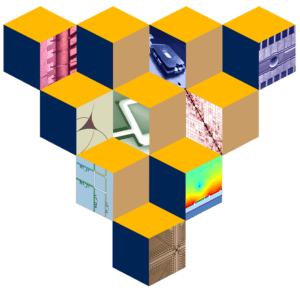 The Quantum Systems Group is part of the Georgia Tech Research Institute’s Cybersecurity, Information Protection, and Hardware Evaluation Research Lab. We are composed of a large team of scientists and engineers from a broad array of disciplines; including physics, chemistry, electrical engineering, optical engineering, mechanical engineering, and chemical engineering.
The Quantum Systems Group is part of the Georgia Tech Research Institute’s Cybersecurity, Information Protection, and Hardware Evaluation Research Lab. We are composed of a large team of scientists and engineers from a broad array of disciplines; including physics, chemistry, electrical engineering, optical engineering, mechanical engineering, and chemical engineering.
Our goal is to develop systems that can be used to advance fundamental research in quantum information science and to develop novel devices based on quantum technologies.
We have four main research thrusts: investigating the physics of trapped ions; developing microfabricated ion traps; modeling quantum architectures; and developing atom-based sensors.
The goal of the QS group is to design systems that can be used to advance fundamental research in quantum information science and to develop novel devices based on quantum technologies.
Quantum information science (QIS): Information can be encoded into selected binary states of quantum systems. A quantum system is any particle or small structure whose behavior is governed by quantum mechanics. Examples of such systems are electron orbitals in ions or atoms, polarization in photons, and electrical current loops in superconductors. When a number of these quantum bits (or qubits) are collected together, their quantum interactions allow them to be used to perform certain algorithms far more efficiently than a classical computer. These algorithms include factoring large numbers, searching unsorted databases, and simulating quantum phenomena in larger systems than currently feasible. Quantum phenomena simulation, in particular, will aid research in protein folding, phase transitions in material systems, and chemical dynamics.
Building quantum information systems: Under past programs, we have designed, fabricated, and demonstrated a number of ion traps and systems to support scalability of quantum information systems using trapped ions. Our current efforts focus on implementing small quantum algorithms in these devices with the goal of better understanding the effects of noise on fidelity of the algorithms.
Quantum Devices: Trapped atoms and ions also make excellent inertial, gravitational, or magnetic measurements, as well as precise frequency standards. We are leveraging our expertise in QIS to develop atomic sensors, atomic inertial sensors and atomic clocks. Deployable ion clocks can benefit from advanced measurement protocols under development at GTRI. These use the transport capabilities enabled by our existing surface ion traps to simplify component requirements, such as relaxing the required linewidth of an optical ion clock. We have also constructed a new lab to test atom chip designs with novel features and component integration for making trapped-atom interferometers.
Our effort to develop atomic magnetometers pairs our quantum device expertise with other groups at GTRI experienced in solving challenging signal processing problems. We are developing the hardware and signal processing techniques required to make use of the extremely high resolution of compact atomic magnetometers in real-world applications ranging from magnetic anomaly detection to research/clinical MEG.
